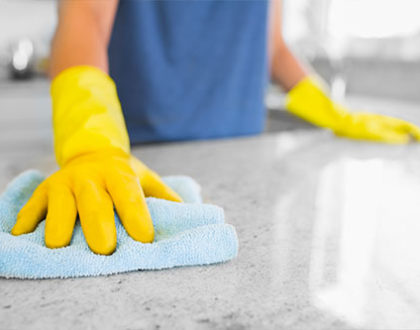Indoor Allergies? Tackle These Often-Neglected Cleaning Tasks to Soothe Your Symptoms

Are you experiencing allergy symptoms such as itchy eyes and a runny nose whenever you spend time in your home? Chances are, indoor allergens such as mold spores and dust mites are to blame. Regular vacuuming, dusting, and washing your bedding will go a long way toward keeping allergy symptoms at bay, but to truly experience relief, you may have to dig a bit deeper and clean these often-forgotten areas where allergens love to hide.
Carpets
Vacuuming does a good job of removing dust and allergens from the top-most layers of your carpet, but dust and other allergens still linger closer to the base of the carpet. These allergens may be propelled into the air when a breeze blows by or when you walk across the carpet.
How to Clean
Having your carpet professionally cleaned is the best option, since the high-powered equipment that professionals use does a better job of sucking allergens out from their deepest hiding places. Allergy sufferers should have their carpets cleaned three or four times a year.
If you’re not able to hire a professional, using a home carpet shampooing system is better than nothing. Just be sure to go over the carpet a few extra times with the “suction only” mode activated and to turn on your ceiling fan after you’re done shampooing. This encourages the carpet to dry more quickly so it does not develop mold.
Window Treatments
Dust settles easily on window treatments, and then whenever a breeze blows in through the window, that dust enters your home’s air again. Whether you have blinds or curtains, chances are, they are a key harboring point for allergens in your home.
How to Clean
If you have curtains or drapes, look closely at the tag before you attempt to clean them. Many must be dry cleaned, but you may find that yours are machine washable. Follow the cleaning instructions on the tag closely so you do not damage your curtains.
If you have blinds, an easy way to clean them is to put a sock over your hand, and then spray the sock with an all-purpose cleaner. Then, run your hand along each blind, picking up dust along the way. If you have a lot of blinds, consider hiring a blind-cleaning service to pick them up and clean them thoroughly.
Shower Curtains
Your shower curtain gets wet every day. All of this moisture leads to mold growth, and the mold spores are certain to trigger your allergy symptoms. If you have a dark-colored or patterned shower curtain, you may not even see the mold growth unless you look very closely.
How to Clean
If your shower curtain or shower curtain liner is inexpensive, you may want to simply replace it. However, it’s worth your while to clean a more expensive curtain or one that has been specially selected to match your bathroom decor. You have a few different cleaning options.
Baking soda works well for removing mold and dirt from fabric shower curtains. Place your shower curtain in the washing machine along with two towels, detergent, and 1/2 cup baking soda. Stop the machine before the rinse cycle, and add 1/2 cup vinegar. Let the curtain air dry before rehanging it.
Bleach works well if you have a plastic shower curtain that won’t discolor when exposed to this cleaner. Fill your washing machine with water, and stir in 1/2 cup bleach and 1/4 cup laundry detergent. Add the shower curtain along with two white bath towels. Let the washer run its cycle, and then hang the curtain up to dry.
Regular cleaning can go a long way toward keeping indoor allergies at bay. Once your carpets, window treatments, and shower curtain are clean, make sure you keep them that way with regular touchups. A professional cleaning company such as DRC Contract Cleaning can also be a great resource.
Recommended Posts

There may have never been a better time to have a trusted cleaning service than in 2020.
June 10, 2021

5 Items That Are Dirtier Than a Toilet
June 11, 2019

